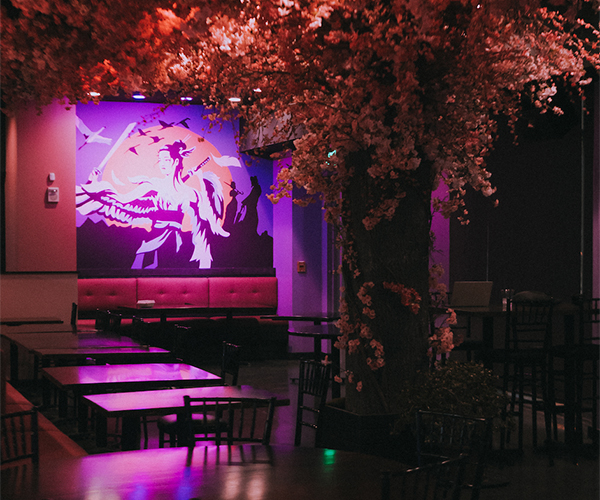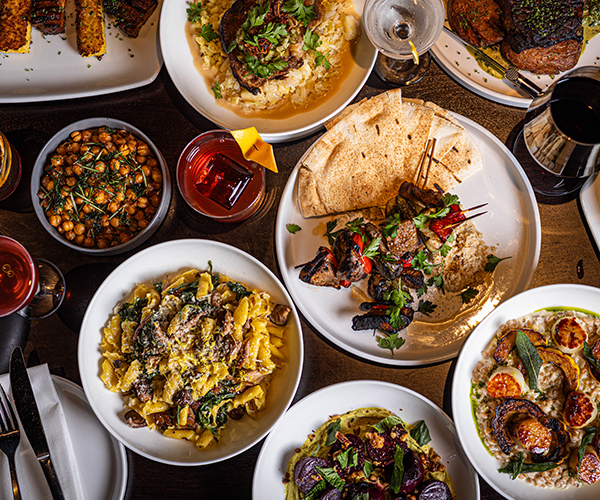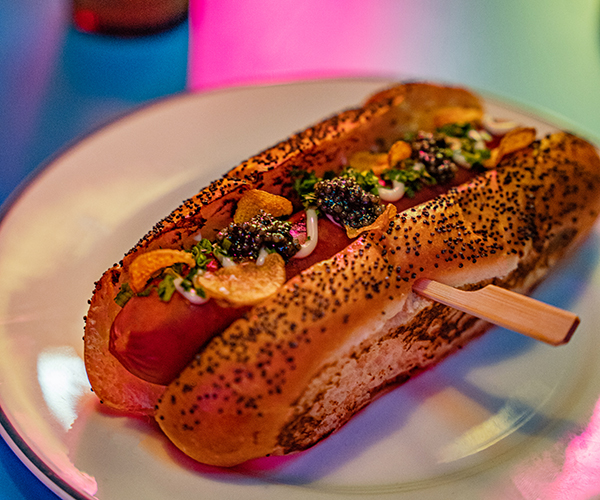| Photography by Barney Taxel |
Pastry chefs are a different breed from the men and women who work the hot line. Pupils of the pastry arts have their own language, tools of the trade and arsenal of ingredients. Whereas cooking employs the fuzzy logic of smidges, pinches and dashes, baking is an exacting science of weights and measures. Many contend that pastry chefs are more creative than cooks, and that they possess a keener attention to detail. (Those same people will also tell you that pastry chefs have but one speed: slow.)
In the sweet world of Cleveland confections, two pastry chefs have risen to the top like the proverbial cream on milk. Heather Haviland, of Sweet Mosaic, and Ron Seballos, of Seballos Pastries, provide the final flourish to a memorable meal, but their educations, operations and working conditions could not be more different.
Feast! sat down for an early-morning chat in Ron Seballos' bake shop - because we couldn't all fit in Haviland's. (Note: During the entire length of the following one-hour interview, this writer was offered exactly zero pastries, which he found ironic - and unbearable.)
When did you realize that pastry arts would be your calling?
HH: I was working the line at a restaurant near Washington, D.C. The chef was a real meanie who believed women didn't belong in a professional kitchen. But one day the pastry chef quit and the chef told me to get back there and make dessert. The next day I went out and bought some books and decided that pastry and baking was what I wanted to do.
RS: I was working at a hotel in Columbus doing hot food. They needed help in the bakeshop after the pastry chef quit, so I volunteered, thinking it would only be for six months. From there I went to the Refectory, a fancy restaurant in Columbus. That's where I developed a passion for pastry.
Any formal culinary education?
RS: I went to the Culinary Institute of America for the baking and pastry arts program.
HH: I never had the time or money to take any professional classes. I would read about a chef who I thought was doing something interesting professionally and I would just show up at their door and say "I'll work really cheap."
So you stalked chefs.
HH: Essentially. My one rule was I couldn't own more than I could fit in my car. My notebooks and the cat had to stay, everything else was expendable. I learned from some really amazing chefs.
So catch us up to speed. Where have you worked up to this point?
RS: After school I went to work at the Greenbrier Resort in West Virginia. That was a huge part of my education. In Cleveland I have worked as a pastry chef at Piccolo Mondo and Giovanni's.
HH: I left Cleveland when I was 21 years old. I traveled around working for different chefs in different cities. I co-owned a restaurant in New York called the Bear Café. My whole family lives here, so I sold my shares in the business and moved back home. That's when Ron [Seballos] hired me. I only worked for him for a few months before moving to fire [food and drink].
How was Ron as a boss?
HH: He was a great boss. I came in with all these crazy ideas from New York and Ron was open to everything.
How was Heather as an employee?
RS: She was wonderful. She treated the business as if it was her own.
Tell us about your businesses.
RS: I sell wholesale pastries to a number of really big accounts, like Severance Hall, the Botanical Gardens, Jacob's Field and catering companies.
HH: We don't go out and seek wholesale business because we don't deliver. Most of what we make we sell at Lucky's Café and farmers markets. I also make wedding cakes when I have the time.
Your kitchens could not be more dissimilar. Describe them to our readers.
RS: My bakeshop is 2,600 square feet. It's broken up into two areas, one where we do all the baking and another where we do all the finishing. There are about a dozen large appliances: mixers, convection ovens, dough shapers.
HH: (Giggling) My kitchen is 12 feet by 12 feet; it's a closet. It's about the size of this table. Actually, I'm coveting this table right now. What I would do with this table. We have a two-by four-foot stainless-steel work table, and another similarly sized table that holds all of our equipment.
How many employees do you have?
RS: Seven full-time employees.
HH: Can I count my mom and sister? And other chefs who volunteer to wash dishes on their day off? I am fortunate to get apprentices who want to do their externships with me.
What is your favorite ingredient?
Simultaneously: Butter.
HH: We go through about 150 pounds of butter a week.
RS: We use over 200 pounds of butter a week. The interesting thing with baking is you can take the same two ingredients, added in different proportions, baked in different times and temperatures, and get three or four completely different products.
HH: Yeah, butter can be used at any number of different temperatures. When you're in a tiny, hot kitchen and have no control of temperature, it can be very challenging.
When so much of baking and pastry relies on four main ingredients, butter, flour, sugar and eggs, how important is the quality of those items?
HH: The quality of ingredients is crucial, even down to the flour. All of the time you invest in baking a loaf of bread means nothing if you've starting with bad flour. I toured some Ohio grain farms and got to see how it was grown and milled. It was one of the best gifts I ever gave myself as a pastry chef. We are really blessed in Ohio with the amount of locally produced ingredients. We use local butter, local eggs, local flour. It's fun to incorporate that into products knowing that you're supporting a local farmer.
RS: Access to good ingredients has increased dramatically. The same items I had a hard time getting in a few years ago are now readily available.
HH: I think a lot of that has to do with the quality of chefs and pastry chefs in Cleveland right now. The demand for those ingredients is higher, and everybody benefits.
What are the qualities of a great dessert?
RS: I think having many different textures. I try and get three, four or five different textures within one bite.
HH: Freshness. One of the things that keeps me excited is the changing of the seasons and what they bring. It challenges me to come up with new ways to showcase those ingredients.
RS: When the customer takes that last bite, I want them to think, Wow, I wish I had another bite. To me that's a good dessert.
HH: I was taught to elevate expectations, elevate the plate. You need to excite the customer the moment you put down the plate so they are excited before they even taste it.
What is your best-selling dessert, and your personal favorite?
RS: Our best seller is the peanut butter crunch, made with milk chocolate and corn flakes, of all things. My personal favorite is a sticky pudding cake, a warm date-nut cake with hot toffee-rum syrup.
HH: Our best-selling dessert is the flourless chocolate mousse gÃÂÂÂÂ.teau. My favorite is our 40-layer cashew crepe torte.
RS: It's very good, I've had it.
What's next for both of you?
HH: I intend to open a small bake shop to produce pastries, finish wedding cakes and for baking desserts for Lucky's and for other cafés we hope to open.
RS: I'm at a crossroads. I'm comfortable with the volume I'm doing. I'm able to balance my business and my family life. I'm happy with the way things are going, but part of me keeps wanting to expand. It's an internal struggle.



